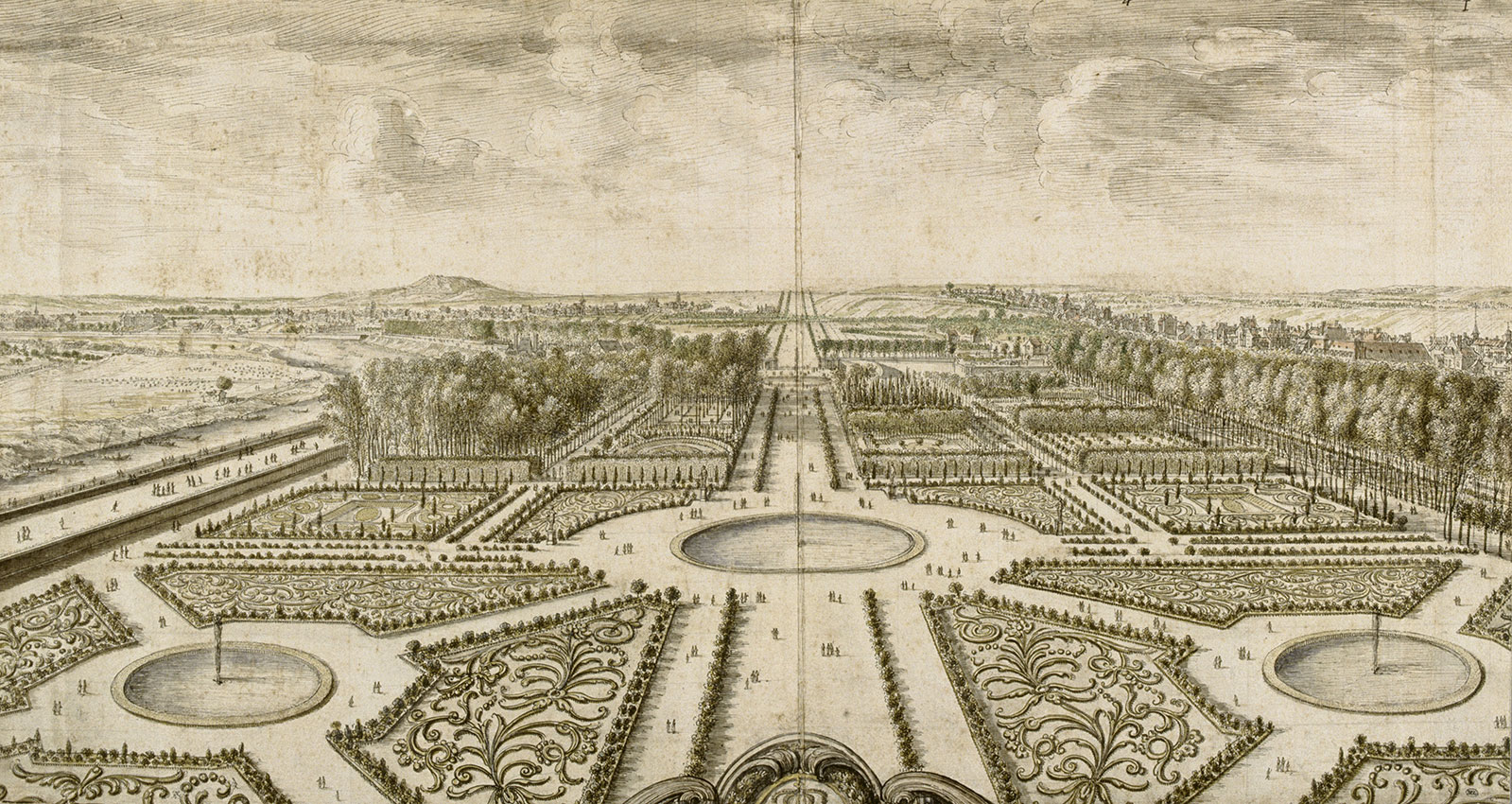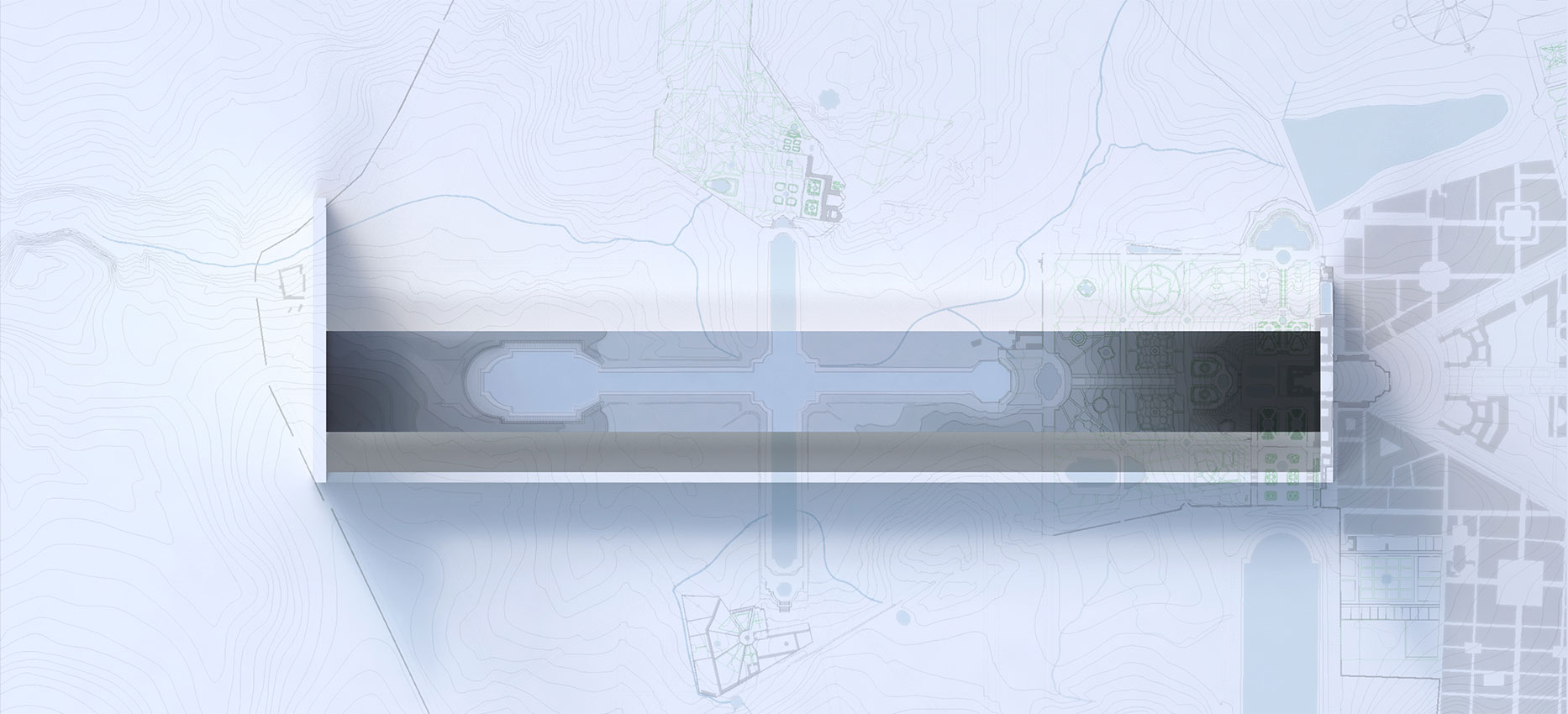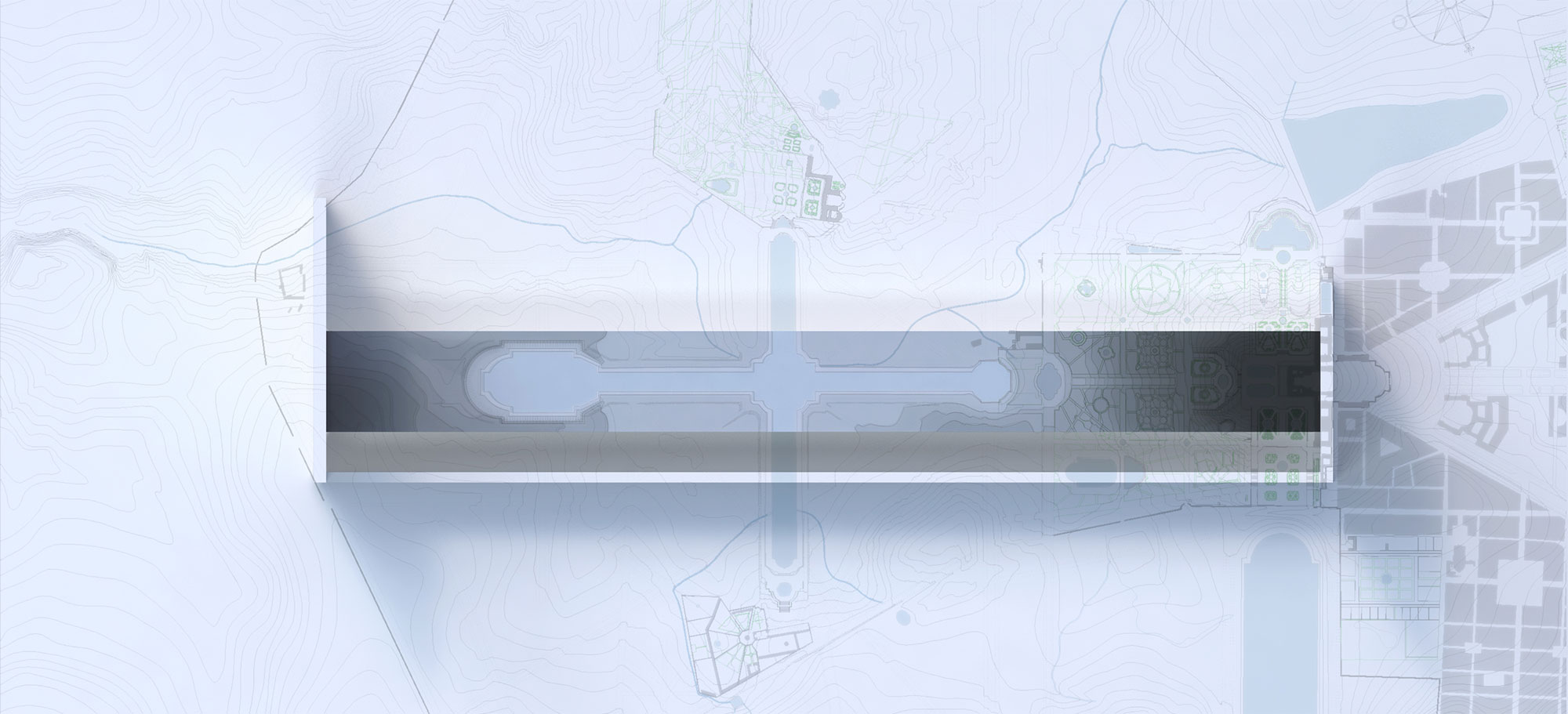Axes
and view points
ROOM N°5
The landscapes designed in France in the 17th century feature vast perspectives along main axes of composition. They are completed by a succession of terraces and parterres, paths and avenues, fountains and canals. Le Nôtre used his mastery of optical perspective to offer strollers a succession of visual effects, through the combined use of two processes: collimations and anamorphosis. Collimations are visual alignments; to obtain them, distances and levels need to be coordinated. As for anamorphosis, it offsets the apparent reduction in the size of distant parts: the further the shapes, the more they need to be elongated and widened.
Crédits
© RMN-Grand Palais (musée du Louvre) / Jean-Gilles Berizzi
© Image : Agence NC



